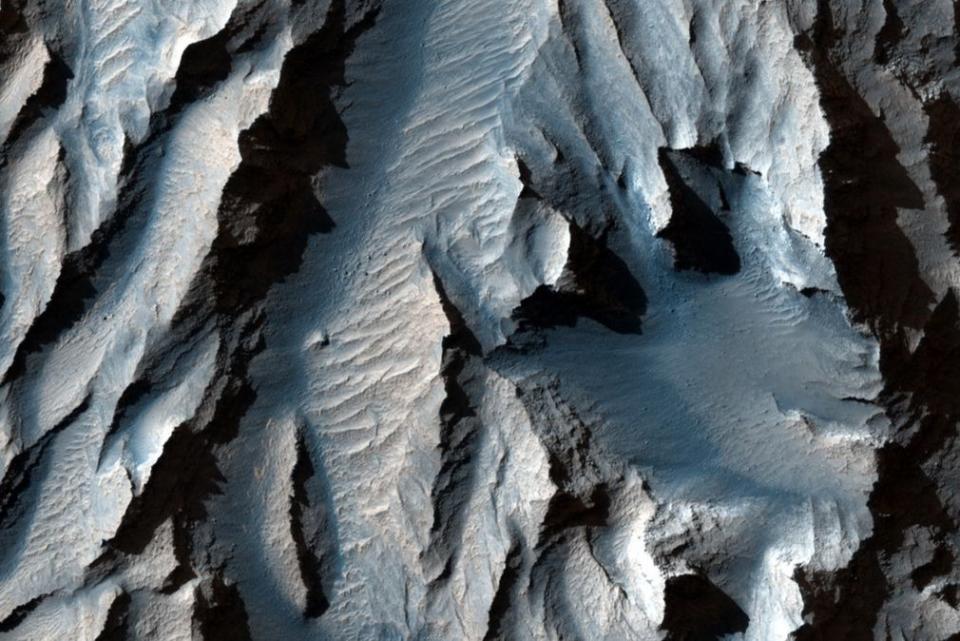Mars’ Grander Canyon: New NASA images reveal depths of the Solar System’s largest gorge

A close-up view of Tithonium Chasma, which is feature of Valles Marineris, the solar system's largest canyon.
(NASA/JPL/UArizona)The Grand Canyon in Arizona is one of the most awe-inspiring sights on Earth. But it merely a scratch compared to the Mars equivalent, new images reveal.
Known as Valles Marineris, this system of deep canyons runs more than 2,500 miles along the Martian equator, spanning nearly a quarter of the planet's circumference.
This gash in the bedrock of Mars is nearly 10 times as long as Earth's Grand Canyon and three times deeper, making it the largest canyon in the solar system. New images from the Mars Reconnaissance Orbiter reveal details about its colossal size.
The photos were taken using the HiRISE (High Resolution Imaging Science Experiment), the most powerful camera ever sent to another planet. It's one of six instruments onboard the Mars Reconnaissance Orbiter, the University of Arizona said.
"Unlike Earth's Grand Canyon, Valles Marineris probably wasn't carved out by billions of years of rushing water; the Red Planet is too hot and dry to have ever accommodated a river large enough to slash through the crust like that," LiveScience said.
The European Space Agency say the canyon’s formation is likely intimately linked with the formation of the neighbouring Tharsis bulge, which is holds the largest volcano in the Solar System, Olympus Mons.
As the Tharsis bulge swelled with magma during the planet’s first billion years, the surrounding crust was stretched, ripping apart and eventually collapsing into the gigantic troughs of Valles Marineris.
Further analysis of high-resolution photos like these will help solve the puzzling origin story of the solar system's grandest canyon, according to LiveScience.

 Yahoo News
Yahoo News 